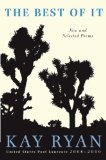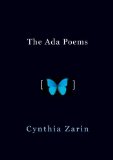Summary | Excerpt | Reviews | Beyond the book | Read-Alikes | Genres & Themes | Author Bio

In his landmark book Ways of Seeing, art critic John Berger wrote "It is seeing which establishes our place in the surrounding world; we explain that world with words, but words can never undo the fact that we are surrounded by it. The relation between what we see and what we know is never settled." While this may be true, Amy Clampitt relished the chance to bridge the gap between seeing and knowing, not to "settle" that relationship but to reveal the immense power that words have to create the world instead of merely explaining it. Seeing, for Clampitt, encompassed all five senses: her poems, like the flora she loved so much, run rampant with sights, sounds, smells, tastes, and textures, and a rich harvest awaits anyone who delves into this selection of her best work.
Although her first full-length collection, The Kingfisher, wasn't published until she was 63, Clampitt was far from idle during her formative years. Indeed, one senses that she was diligently saving up a storehouse of words and images until they had ripened to perfection rather than rush her poems into a world that often seems too fast-paced and brutish to appreciate her deliberately, gracefully crafted verse. Though she spent most of her life in New York City's hustle and bustle, she never lost the reverence for nature that growing up on the Iowa prairie gave her. In the 1950s, she worked as a librarian at the National Audubon Society, and her poems ring with the cries of birds, not only exotic ones like peacocks and kingfishers but also more humble fowl like pigeons and, in one of her most famous poems, "A Hermit Thrush". The array of flowers, trees, and even weeds that burst forth from her work calls to mind a botanical garden, perhaps nowhere more vividly than in the hallucinatory "The Sun Underfoot Among the Sundews":
"an underfoot
webwork of carnivorous rubies,
a star-swarm thick as the gnats they're set to catch…"
Flowers both comfort and stir unease in the poignant "Pot Nomads," written while she was undergoing treatment for cancer:
"three potted primulas, royal-
blue corollas each engauded
yellow at the center,
brought by a kindly colleague
to cheer up the premises."
Later in the poem, she plants them outdoors, wondering if they (and she) will survive the coming winter.
In an interview that she gave to The Paris Review, Clampitt stressed the difference between writing for the ear and writing for the brain; she herself wrote for the former without neglecting the latter, and one of the best ways to enjoy her poetry is to read it aloud. The first few selections from The Kingfisher provide ample evidence of this. Writing of the fog that often shrouded the Maine landscape where she spent her summers, Clampitt evokes textures so luxuriantly that you can almost wallow in them ("…hanging / tassel by tassel, panicled / foxtail and needlegrass, / dropseed, furred hawkweed, / and last season's rosehips") before conjuring the sounds "of foghorns; the nodding / campanula of bell buoys; / the ticking, linear / filigree of bird voices" ("Fog"). While Clampitt was a master of form, meticulously breaking poems into stanzas (she often used tercets and quatrains--stanzas composed of three and four lines, respectively) and experimenting with sonnets, she also engaged the reader with her conversational tone and obvious delight in the natural world. The same poet who could write a two-page poem composed of one long, gloriously punctuated sentence ("The Olive Groves of Thasos") could equally deftly conjure her childhood self as "the shirker propped / above her book in a farmhouse parlor" ("Imago") or pose the question "what's landfill but the backside of civility?" ("The Reedbeds of Hackensack").
This new selection of Clampitt's work offers enticements apart from the essential quality of the poems themselves; poet Mary Jo Salter has written an excellent introductory essay, compiled a timeline, presented Clampitt's explanatory notes on the poems, and provided a list of scholarly essays. My only caveats are the size of the collection--at 330 pages, it's daunting for those who want to delve into poetry but who don't want to invest in the Collected Poems (Salter edited Clampitt's entire oeuvre in 1997)--and the large format which, though it makes an ideal showcase for the striking cover photo of the author, also looks and feels like a textbook. With the general public often indifferent to or intimidated by poetry, this format seems an odd choice for inviting new readers to experience such a visionary poet. Amy Clampitt brought a fresh way of seeing to American verse, and this edition, despite a few shortcomings, abundantly displays the bracing light that her words shone on the surrounding world.
![]() This review
first ran in the November 17, 2010
issue of BookBrowse Recommends.
This review
first ran in the November 17, 2010
issue of BookBrowse Recommends.

If you liked Selected Poems, try these:

by Kay Ryan
Published 2011
A major event in American poetry: The poet’s own selection of more than two hundred poems, offering both longtime followers and new readers a stunning retrospective of her earlier work as well as a generous selection of powerful new poems.

by Cynthia Zarin
Published 2010
A dazzling story of obsessive love emerges in Cynthia Zarin's luminous new book inspired and inhabited by the title character of Nabokov’s novel Ada, or Ardor: A Family Chronicle, who was the lifelong love of her half brother, Van.
Your guide toexceptional books
BookBrowse seeks out and recommends the best in contemporary fiction and nonfiction—books that not only engage and entertain but also deepen our understanding of ourselves and the world around us.